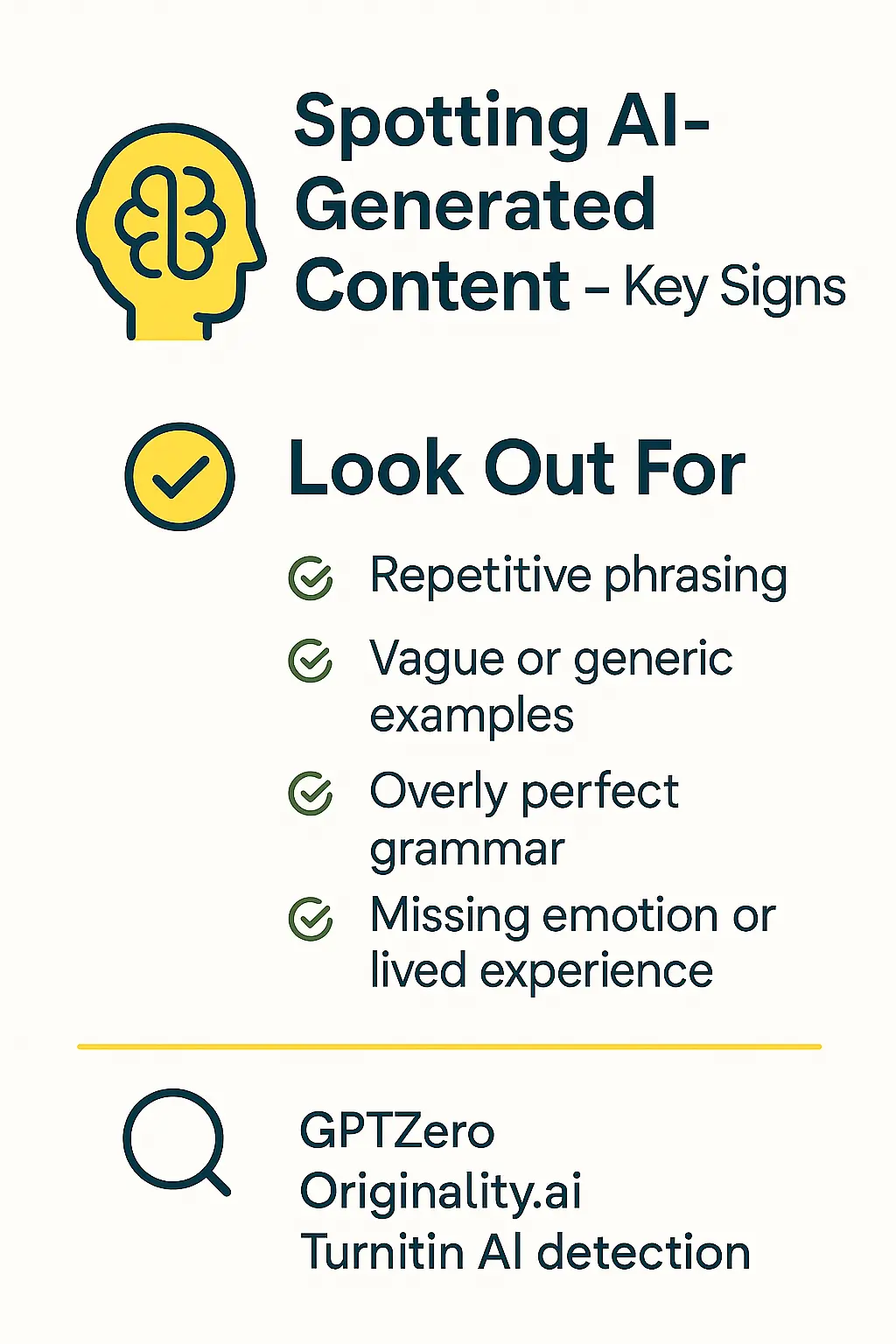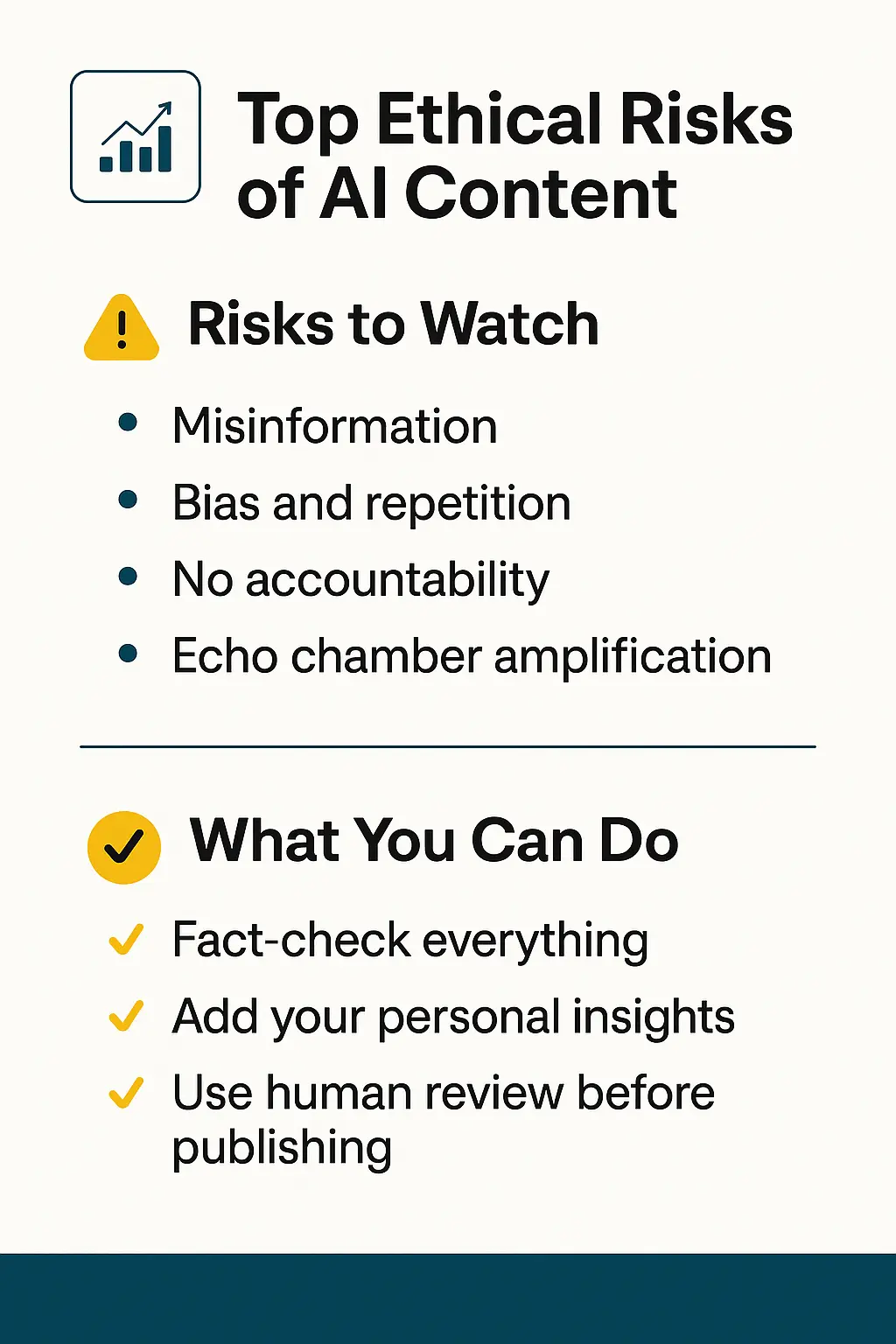Understanding AI-Generated Content: Ethical Challenges, Ownership, and Editing
- Artificial Intelligence
- Understanding AI-Generated Content: Ethical Challenges, Ownership, and Editing
Why you can trust our content
The tech space is full of hype and difficult terms; we take the reliability standards to new heights. Our blog content is backed by:
Learn more
- Experienced tech professionals, developers, and product engineers
- First-hand data from real projects and in-house case studies
- Verified standards from trusted sources like Statista and BD
Let’s Work Together
Why AI Content Is Shaping the Future of Digital Publishing
AI-generated content has quickly become a staple in online communication, used for everything from product descriptions to full-length articles. But as its presence grows, so do questions about authorship, ethics, and how to ensure content meets the quality standards audiences and search engines expect.
This guide breaks down what AI-generated content is, how to check if content is AI-generated, and what it means for copyright laws, editorial standards, and ethical practices.
What Is AI-Generated Content?
Simply put, AI-generated content refers to any text (or media) created with the help of artificial intelligence models trained on large volumes of data. These tools produce human-like language based on patterns, prompts, and past content.
You’ll find AI-generated text across:
- News summaries
- Blog posts
- Product listings
- Social media captions
- Email copy and more
Its ability to scale content production is transforming how marketers, writers, and businesses operate online.
How to Check If Content Is AI-Generated
Common Detection Tools:
- GPTZero
- Originality.ai
- Turnitin (AI detection)
- Crossplag
These tools analyze factors like:
- Sentence structure uniformity
- Predictable phrasing
- Repetitive vocabulary
- Lack of context-aware details
Red Flags to Watch For:
- Overuse of filler transitions (e.g., “Moreover,” “In conclusion”)
- Generalized statements with no depth
- Perfect grammar but no human nuance

Who Owns AI-Generated Content?
The Legal Debate:
- If a human provides detailed prompts and edits the output, they may be considered the author.
- In many regions, purely machine-created content cannot be copyrighted without human input.
Platforms like the U.S. Copyright Office currently do not recognize AI as a “legal author,” meaning content must show substantial human contribution to qualify for protection.
Can You Copyright AI-Generated Content?
The Short Answer: Sometimes—With Conditions.
Copyright Protection May Apply If:
- A human shapes the content meaningfully
- Substantial editing or rewriting is involved
- The work includes original input or decisions
Notable Cases:
- In 2023, the U.S. Copyright Office denied protection for an AI-only artwork
- Courts have favored copyright when a human provided clear creative guidance
If you’re using AI tools in your writing workflow, make sure the final output reflects your unique input.
What Are the Main Ethical Challenges Posed by AI-Generated Content?
1. Misinformation and Fake News
2. Lack of Originality and Bias
3. Accountability
When a chatbot says something wrong, or offensive, who takes responsibility? Creator? Platform? User? The lines aren’t always clear.

How to Edit AI-Generated Content for Quality
1. Identify Weak Spots
2. Rewrite for Clarity and Style
3. Humanize the Flow
4. Ensure Accuracy
Follow our 4-step checklist to clean up AI content and make it publish-ready.
How to Bypass AI-Generated Content Detection
Rewriting Techniques That Work:
- Add original ideas or commentary
- Break up sentence patterns
- Change generic words to specific ones
- Use storytelling elements
But remember: the goal isn’t to “cheat” detection, it’s to make content better. That’s why the best way to bypass AI-generated content detection is to write like… well, a human.
Learn how to rewrite AI text without losing its structure, but giving it your voice.
Conclusion: Quality, Ethics, and Ownership Need to Go Hand-in-Hand
Balance AI Speed with Human Integrity
FAQs
Can you copyright AI-generated content?
Only if there’s clear human involvement—pure AI content is not eligible for copyright in most regions.
How to check if content is AI-generated?
Use tools like GPTZero or look for predictable, flat writing patterns.
What are the main ethical challenges posed by AI-generated content?
Misinformation, lack of originality, and accountability concerns are top issues.
How to edit AI-generated content?
Refine tone, add clarity, ensure accuracy, and include human insight or emotion.
How to bypass AI-generated content detection?
Rewriting content using natural flow, specificity, and unique structure helps make it sound more human.
Share this post on social media:
Zain Ali is a dynamic AI engineer and software development expert known for crafting intelligent, scalable, and future-ready digital solutions. With extensive experience in artificial intelligence, machine learning, and web development, he empowers businesses by building systems that drive performance, automation, and innovation.




